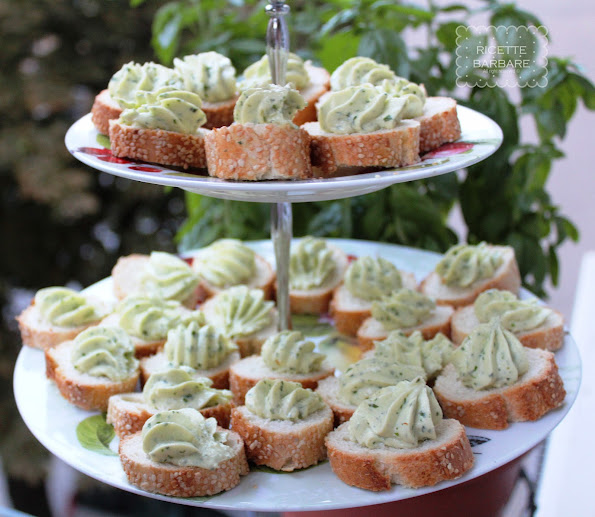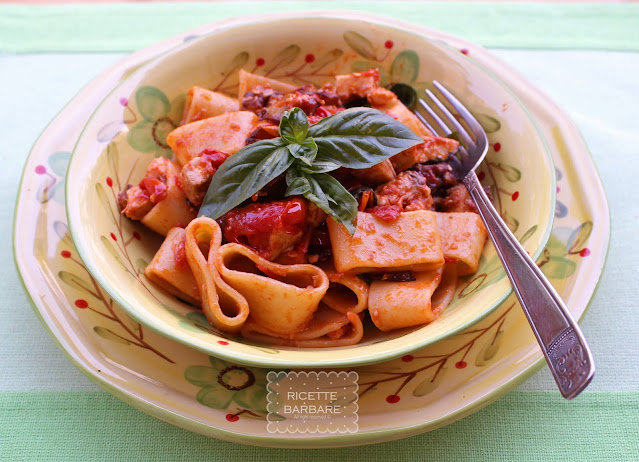Sono passati tanti anni da quel lontano 2004 eppure il forum della Cucina Italiana continua ad essere presente sulla mia tavola con la crema di pecorino di Enzo Raspolli che non manca mai nei miei buffet o tra i miei antipasti: scegliete voi se preparare una ciotola da cui ogni commensale si servirà (con abbondanza!!) oppure se preparare già dei crostini. Sappiate che in ogni caso finirà in un baleno, per quanto è buona!
English version belowSapore:
gusto deciso e molto gustoso, una vera bontà.
Complessità:
nessuna difficoltà.
Dove l’ho
trovato? Forum Cucina Italiana anno 2004.
E’ un copia ed incolla di quanto aveva scritto Enzo, quindi… riporto anche i suoi commenti!
Siccome l'ho pubblicata due o tre volte e vado sempre ad occhio non vorrei che
qualcuno confrontasse le varie versioni della crema di pecorino e mi
sbugiardasse di fronte all'orbe telematico. Comunque è una vera ricetta senese
del 400 anche se allora veniva fatta, ovviamente, nel mortaio e non con il
frullatore come si fa oggi.
Ingredienti
circa 200 gr di pecorino semistagionato
un uovo sodo
un mazzetto di prezzemolo
10 foglie di basilico
olio extravergine d’oliva
sale e pepe
Preparazione
Si usi il pecorino abbastanza fresco e per 2-3 etti
di questo di faccia rassodare un uovo.
Poi si metta nel frullatore del prezzemolo fresco, del basilico se c’è, una puntina di peperoncino e si frulli insieme al formaggio. Quando le verdure saranno ben amalgamate si aggiunga il torlo dell’uovo sodo e, continuando a frullare, 4-6 cucchiai di buon olio extravergine di oliva.
Se tutto va bene il composto impazzisce e si vedranno dei grumi di formaggio separati dall’olio. Benissimo.
Aggiungete anche il chiaro dell’uovo sodo e
continuate a frullare e poi aggiungete dell’acqua fredda a cucchiai e vedrete il miracolo.
Quando ormai siete per buttare via tutto il composto si rassoda improvvisamente ed anzi tende a diventare fin troppo duro tant’è che dovrete aggiungere acqua fino a portarlo alla consistenza della Nutella.
Se invece il composto non impazzisce peggio per voi e vi verrà una crema di pecorino “normale”. In ultimo aggiungete un poco di sale, se manca.
Sempre dal Forum della Cucina Italiana di quell'anno, Enzo ci ha regalato il paté di fegatini, che faccio con la sua ricetta da tantissimi anni e, come questa crema di pecorino, trovo sia semplicemente fantastico! Presto sulla tavola di Ricette Barbare!
The pecorino cream recipe by Enzo Raspolli is a classic Tuscan recipe that is always present on my table, at buffets or as an appetizer. You can choose to prepare a bowl from which each guest can serve themselves (with plenty!!) or prepare crostini already. In any case, it will be gone in a flash, because it is too good!
Complexity: no difficulty.
Where did I find it? Italian Cooking Forum, 2004.
Ingredients:
200 grams (7 ounces) pecorino cheese, semi-aged
1 hard-boiled egg
1 bunch parsley
10 basil leaves
1/4 teaspoon red pepper flakes
4-6 tablespoons extra-virgin olive oil
Salt and pepper to taste
Instructions:
In a blender, combine the parsley, basil, red pepper flakes, and pecorino cheese. Add the hard-boiled egg yolk and 4-6 tablespoons of olive oil. Blend until smooth. Add the hard-boiled egg white and blend until combined.
With the blender running, slowly add a few tablespoons of cold water at a time until the cream reaches the desired consistency. Season with salt and pepper to taste.
Tips:
Use a good quality pecorino cheese for the best flavor.
To make the cream ahead of time, store it in an airtight container in the refrigerator for up to 3 days.








